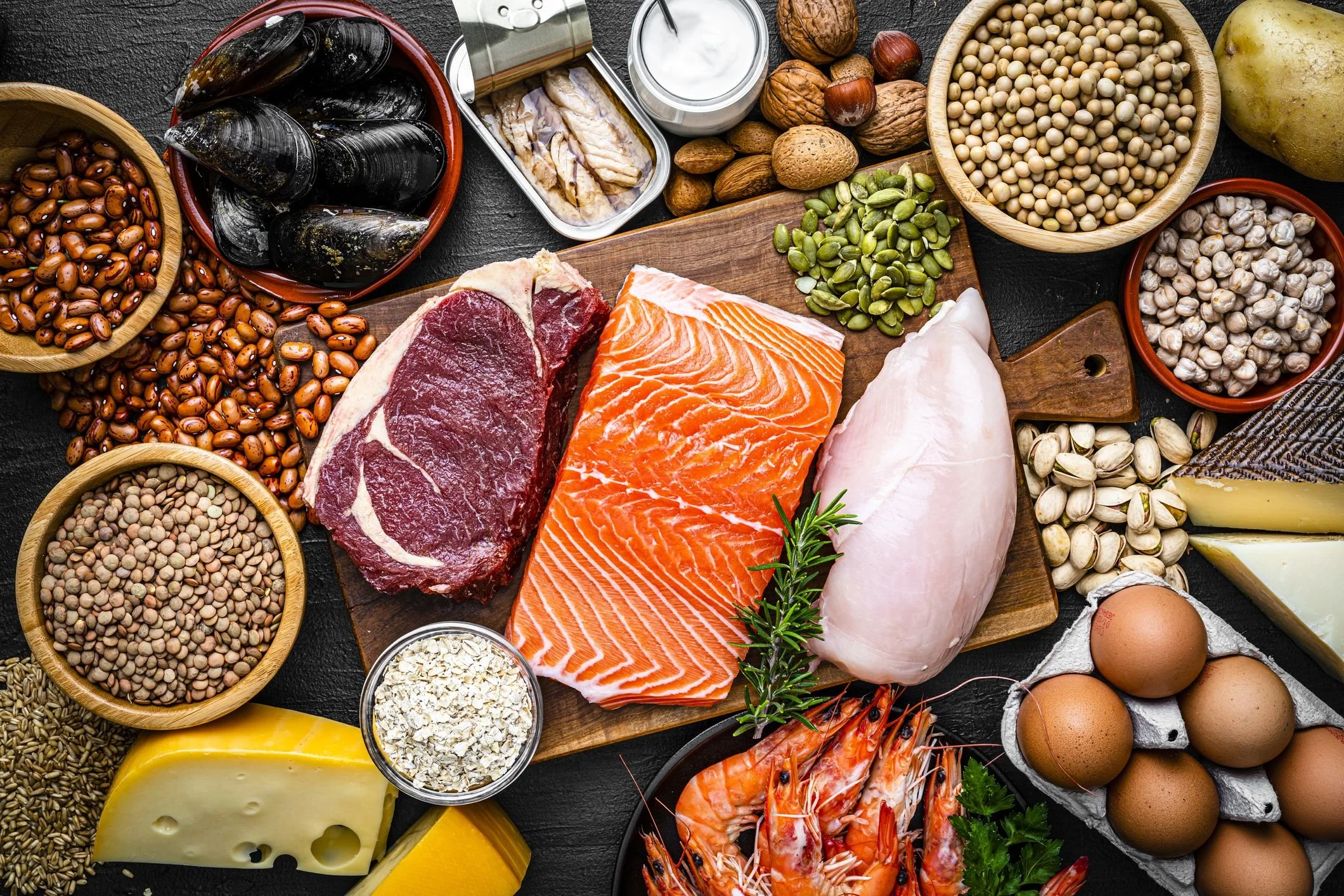The Importance of Dietary Protein while on a GLP-1
With the increasing popularity of GLP-1’s, it’s important to be educated on how to properly fuel your body while experiencing weight loss at such a fast pace. There are certain nutrients that are crucial in determining how your body handles this weight loss and one’s that help to preserve muscle and lean body mass which is at risk of being diminished with weight loss. Protein, for example, is a key nutrient that helps to protect muscle mass and burn fat as an alternative.
When losing weight, it is possible that you start to lose muscle as well as fat; sometimes it can be difficult to tell the difference when measuring weight with a scale, as the number would be decreasing either way. It is crucial to maintain muscle mass, as it has many important functions like maintaining healthy blood sugar, triglycerides, and cholesterol levels in the blood. One way this can be measured is through an Inbody or Dexa machine near you; these can give you direct percentages for body fat, lean body mass, and even bone density. However, these can be expensive and not accessible to all. A more affordable option is to purchase a smart scale which can also measure fat and muscle percentages. Although a Dexa or Inbody machine would provide more accurate results, a smart scale can help guide you in the right direction. It should be a goal to preserve muscle mass as best you can to your ability, and you can do so through diet and exercise.
As dietary protein is crucial for preventing weight gain after administering a GLP-1, it is also crucial for minimizing the loss of lean muscle tissue. ReadySteps RD Eilish Faherty says, “In my mind, our protein consumption is the groundwork of our nutritional wellness. An essential macronutrient, protein is the building block of more than just our muscles but plays a key role in hormone balance. If you find yourself hungry even after eating or not seeing results from your consistent gym sessions, take a peek at your daily protein consumption. Find a way to incorporate protein into every meal or snack – our delicious protein powders and snacks make this easy!”. The typical recommendation for daily protein intake is around 0.8-1.0 grams per kilogram of body weight per day. However, during administration of the GLP-1, protein intake should be increased to around 1.2 grams per kilogram.
Given there are so many different types of protein sources, it can get confusing when trying to pick one out to purchase. Any type of protein source that you like is great, but it is important to read nutrition labels so you are aware of any added ingredients. Animal sources such as eggs, chicken, fish, lean beef, and even low-fat greek yogurt are all nutritious, high-protein options. If you are vegan, vegetarian, or want to limit consumption of animal protein, some plant protein sources include tofu, edamame, lentils, beans, and nut butters. On-the-go high-protein snacks are also great to make sure you reach your daily protein goal. Here at ReadySteps, we offer some great protein snack options that are quick, easy, and can be brought with you anywhere. We have protein chips which have 14 grams of protein, proti-VLC bars with 15 grams of protein, and proti-VLC ready-to-drink shakes with 20 grams of protein.
Because GLP-1’s result in rapid weight loss, consuming enough food, especially protein, is extremely important to prevent the loss of muscle and lean body mass. In severe cases, malnutrition can even occur. Since nutrition is individualized, we recommend working with a registered dietitian to ensure that you are not only aware of your personal needs, but you are also aware of what steps you can take to make sure you reach those goals. Registered dietitians can help educate you on nutrient dense foods, harmful additives or foods to limit, and give you overall structure on how to build a plate with the proper amount of fats, carbs, and proteins. Schedule a call with a ReadySteps Registered Dietitian to learn more!


